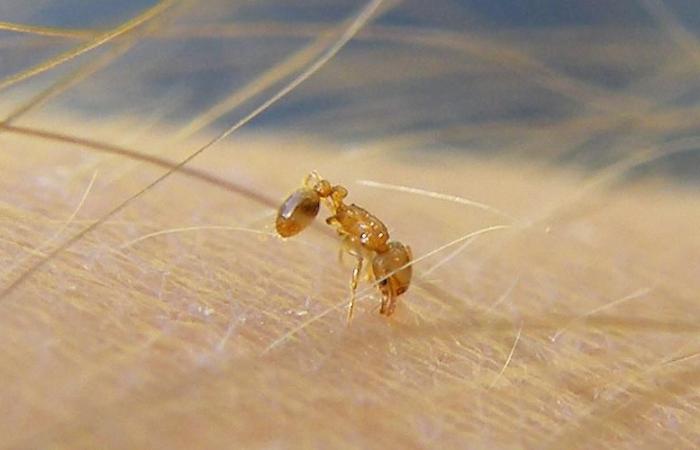
The electric ant, an invasive species, has been recorded for the second consecutive year in the south of France. The insect, originally from South America, is not currently found in Switzerland. But for scientists, it’s only a matter of time.
The tiny orange insect could well join the Asian hornet on the list of problematic insects in Switzerland and Europe.
Climate change could allow the electric ant to adapt very well in the long term to the future living conditions of our country, in a canton like Ticino, for example. An increase in temperatures would favor the survival of this insect.
>> Read also: Invasive and dangerous, the electric ant has been detected in France
The electric ant is feared for its painful sting which resembles an electric shock, hence its name. Measuring just 1.5 millimeters, it also causes significant damage to its environment and threatens other animals.
“They destroy other species of ants and insects, but they will also attack lizards,” explains Laurent Keller, the former director of the Ecology and Evolution Department at the University of Lausanne, on RTS.
Juvenile hormone as a solution
The Galapagos Islands are familiar with this problem. Electric ants sometimes attack “iguanas or other native species. Having been able to observe them in this archipelago in the Pacific Ocean, biologist Daniel Chérix, however, emphasizes that a solution exists.
It is in fact possible to control them, or even eradicate them, by making them absorb juvenile hormone. “It’s a product that is not toxic,” he says. “It is a product that insects synthesize and use for the development of larvae and for reproduction.”
The biologist explains that by increasing the amount of juvenile hormones in the ants’ diet, “the queens will stop laying eggs and after three weeks or a month, society will decline.” “So we can control this ant without using pesticides, which is not so bad,” he concludes.
Natacha Van Cutsem/edel
Swiss





